The Connected Car Ecosystem Battle: Star Era Meizu Demonstrates Its Strength
![]() 01/02 2025
01/02 2025
![]() 709
709
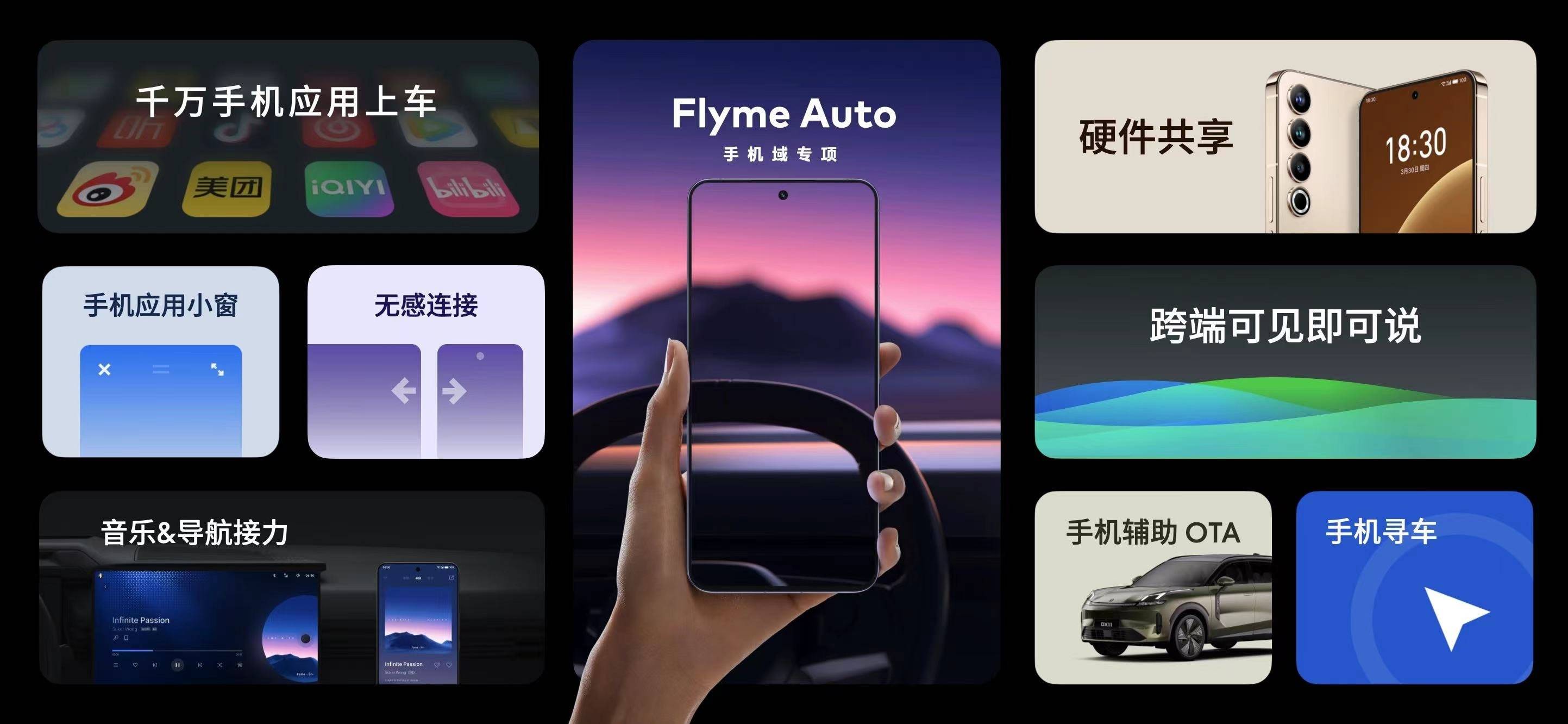
Produced by | Tanke Travel
Designed by | Qianqian
Reviewed by | Songwen
In November 2024, China achieved a significant milestone by producing its 10 millionth new energy vehicle of the year, marking a profound transformation in the country's automotive industry structure. The industry is rapidly transitioning from electrification and sharing to connectivity and intelligence.
Amidst the wave of automotive electrification and intelligence, the smart cockpit, the hub for human-vehicle interaction, is experiencing unprecedented changes. Many automakers believe that as smart cockpits evolve to offer scenario-based experiences, they can bridge the gap between "cars," "homes," and "mobile phones," enabling the growth of the smart car ecosystem.
Achieving seamless connectivity between cars and mobile phones, integrating mobile devices, in-car infotainment systems, and more intelligent terminals into a unified operating system, has emerged as one of the hottest trends in the automotive industry.
Companies such as Star Era Meizu, Huawei, Xiaomi, NIO, Xpeng, and others have embarked on the path of "ecosystem" construction.
1. The Gold Rush Moment
"Ecosystem" is not a new concept, and its power has been proven in the smartphone market.
Apple, the first company in human commercial history to surpass a market valuation of $3 trillion, has prioritized the transition from a product-oriented company to a platform ecosystem company throughout its nearly five decades of growth.
Today, smart cars are viewed as the next generation of intelligent terminals, and the goal of ecosystem construction is to integrate them seamlessly into smart living. According to data from the China Association of Automobile Manufacturers, China's annual production of new energy vehicles surpassed 10 million units in mid-November this year.
In the future, whoever controls the smart car operating system will hold the soul of the vehicle. No automaker, mobile phone manufacturer, or even Apple itself, will miss this golden opportunity to become the Apple of the smart car market.
Upgrading domestic in-car infotainment systems is the first step for automakers and mobile phone manufacturers.
Mainstream automakers like Geely, BYD, and Great Wall, along with tech companies such as Star Era Meizu, Huawei, and Xiaomi, are actively investing in the development of domestic in-car infotainment systems. Operating systems like Star Era Meizu's Flyme AIOS, Huawei's Harmony OS, Xiaomi's HyperOS, BYD's DiLink, and Xpeng's Xmart OS have been launched and put into application, marking a boom period for automotive operating systems.
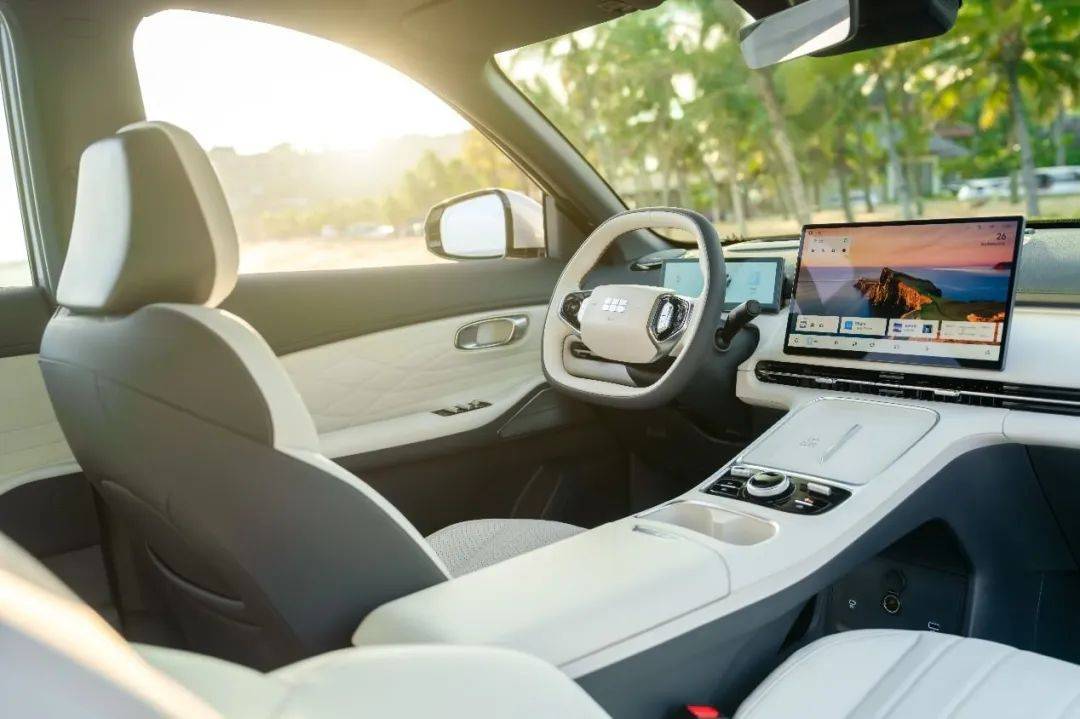
From the perspective of in-car infotainment systems alone, compared to the already mature PC and mobile phone operating systems, in-car infotainment systems lag behind in both functionality and performance. Coupled with the fact that the application scenarios of in-car infotainment systems are limited by driving conditions, their development is even more challenging.
Moreover, unlike the mobile phone industry, the automotive supply chain is more complex, blending intelligence, transportation, and energy attributes. This complexity poses challenges for participants in building the automotive ecosystem, including long development cycles, technical difficulties, and substantial capital investment.
For this reason, everyone eagerly anticipates the emergence of an autonomous, controllable, open, and smooth automotive ecosystem akin to iOS.
Against this backdrop, Star Era Meizu has provided a benchmark answer.
In March 2023, Star Era Meizu launched Flyme Auto. As an extension of Flyme AIOS in the smart cockpit, Flyme Auto is a vehicle-mounted human-computer interaction software developed by Star Era Meizu for the automotive industry, dedicated to achieving seamless mobile phone-car connectivity in the realm of smart cars.
Some domestic in-car infotainment systems currently available on the market still grapple with issues such as inadequate ecosystems, difficult interconnectivity between in-car infotainment systems, mobile phones, and smart hardware, and weak scenario-based experiences.
However, Flyme Auto's seamless relay, mobile phone-assisted OTA, hardware interoperability and sharing between mobile phones and cars, support for mobile phone-based car location, parallel viewports, small window displays, cross-device voice control, and other features provide a smooth, intelligent, connected, and eco-rich smart cockpit solution for global brands, redefining the in-car infotainment ecosystem.
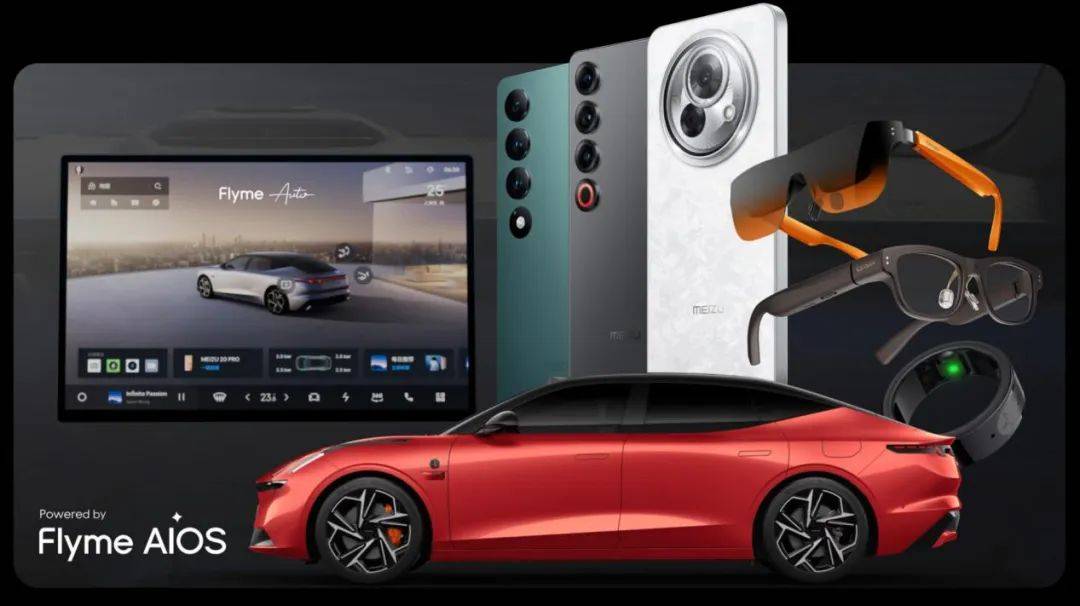
2. Flyme AIOS: Redefining the Ecosystem
After its launch, Flyme Auto was first installed on Geely's Lynk & Co 08.
This model benefits from the optimization of the in-car infotainment system, directly overcoming traditional in-car infotainment lag. Reflecting on sales growth, since its launch in September 2023, Lynk & Co 08 has sold over 10,000 units in multiple months.
Currently, 19 models have integrated the Flyme Auto system, including collaborative models from brands such as Lynk & Co, Polestar, and Geely Galaxy, making it the smart cockpit operating system with the highest number of models currently available on the market.
As of November 2024, this system covers over 320,000 car owners, and Star Era Meizu has emerged as one of China's leading smart cockpit providers.
Such achievements stem from Star Era Meizu's over a decade of experience in developing operating systems.
Unlike some new energy automakers that build systems from scratch and then extend them to smart terminals like mobile phones and AR glasses, Flyme Auto is derived from Star Era Meizu's Flyme AIOS technical foundation, representing an extension of Flyme AIOS into the smart cockpit domain.
What's more special is that Star Era Meizu's Flyme system was one of the earliest custom systems introduced in China. After more than a decade of updates and iterations, the Flyme system has made significant strides in interface design, functionality, performance optimization, and user experience.
Today's Flyme AIOS boasts powerful AI capabilities, excellent interactive experiences, efficient cross-device collaboration, and outstanding ecological expansion capabilities, providing users with an intelligent, convenient, smooth, and rich fully connected experience across scenarios.
Star Era Meizu has extended the simple and smooth design style of Flyme AIOS from mobile phones to in-car infotainment systems, resulting in the Flyme Auto system. It also showcases an intelligent travel ecosystem centered on the "mobile phone domain," integrating multiple terminals, full scenarios, and immersive experiences.
Against the backdrop of the development of large AI models and interconnectivity between various terminal devices, Flyme AIOS, as the core of all Star Era Meizu hardware products, facilitates multi-device collaboration across core scenarios such as Flyme XR, Flyme Auto, and Flyme Mobile, offering users a multi-device, full-scenario, and immersive integrated experience.
Unlike other participants who are still focused on hardware layout, Star Era Meizu realized early on that in the era of the Internet of Everything, the software ecosystem is far more crucial than hardware. The software ecosystem serves as the foundation for breaking down barriers between devices and enabling interconnectivity and collaborative work among different hardware products.
Just like Apple in the 21st century, which has innovatively combined various software technologies and user understanding in multiple directions and forms, the innovations in hardware products such as the iPhone, iPad, and Mac are actually rooted in innovations within the ecosystem itself.
A similar scenario is now unfolding with Star Era Meizu's Flyme AIOS. Based on the innovation of Flyme AIOS, the demand for new hardware markets covered by Star Era Meizu is surging.
Not limited to the realms of smartphones and smart cars, the development of the Flyme AIOS ecosystem naturally promotes the emergence and deep integration of wearable devices such as terminal AR smart glasses and smart rings.
Currently, based on Flyme AIOS, Star Era Meizu boasts numerous hardware products spanning mobile phones, wearable devices, and automobiles, becoming the linchpin of Star Era Meizu's ecosystem construction.
3. Initiating the Ecological Breakthrough: Starting with AI
At the end of February this year, Apple announced that it was abandoning car manufacturing and shifting focus to generative AI.
Tim Cook, Apple's CEO, stated at the annual shareholders' meeting that Apple was making significant investments in the field of generative AI. He also noted that Apple had recognized the potential of generative AI.
Should Apple focus on car manufacturing or All in AI? For Apple, this ultimately became a challenging choice. However, for Star Era Meizu, this either-or dichotomy does not exist. In the ecosystem race, "manufacturing" cars and AI are not on opposite ends of the scale held by Star Era Meizu but are instead integrating with each other.
Back in February 2024, Star Era Meizu proposed an All in AI strategy, encompassing the creation of AI terminals, the reconstruction of the Flyme system, and the building of an AI ecosystem.


In the wave of integrating AI capabilities into products, most manufacturers have opted to make partial supplements and optimizations within the existing product framework, akin to patching up old clothes with new fabric, resulting in only "patchwork" improvements that do not address the root cause.
However, Star Era Meizu has abandoned the traditional model, delving into the foundation and starting from the core of the operating system. It has rebuilt the system structure and interaction mode based on the characteristics of AI, crafting a new product architecture logic.
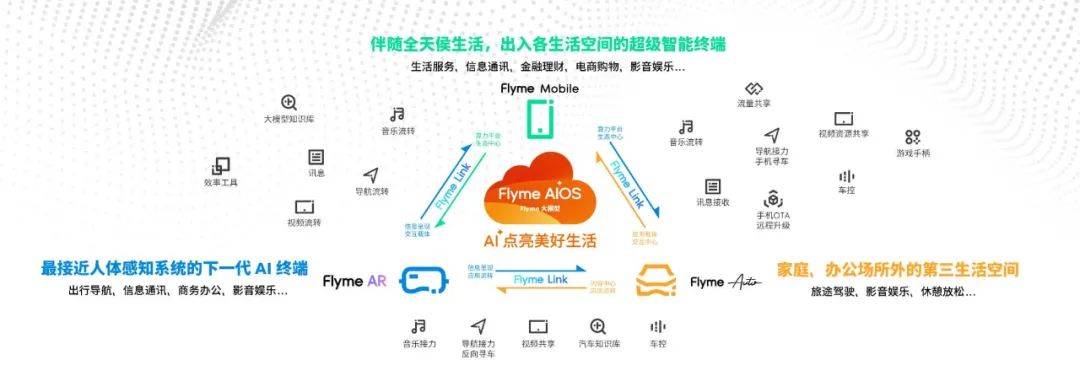
In simpler terms, Star Era Meizu is not developing AI around terminals but rather iterating on new platforms and developing new hardware centered around AI.
Take the Aicy assistant as an example; it is the core intelligent interaction capability of Flyme. Empowered by AI, in addition to incorporating supernatural voice tones and continuous dialogue capabilities, it also provides users with a realistic experience that is almost indistinguishable from a real human conversation in terms of tone, voice, and sentiment. In doing so, while solving user problems, it also offers genuine emotional value.
To date, the Flyme team has successively developed and implemented over 100 AI functions. With AI capabilities ranking among the industry's top tier and surpassing most peers in quantity, Flyme AIOS is fully entering the "system-level" productivity phase. Flyme Auto has also achieved AI integration. When AI capabilities are deployed in vehicles, they offer users a smoother, easier-to-use interface and a rich application ecosystem. The upcoming Flyme Auto 2.0 will continue to evolve in terms of AI intelligence, scenario integration, and ecological expansion.
In addition to specific capability enhancements, Star Era Meizu is also building technical and ecological capabilities that are "more efficient, agile, and open" based on the AI framework.
Amidst the wave of automotive intelligence, "hand-car interconnectivity" is a clear direction for the development of smart cockpits. However, many automakers adopt the approach of "deeply binding" their own brand mobile phones with in-car infotainment systems. Even with Xiaomi's P1 chip and Huawei's HarmonyOS, there may still be barriers such as inconsistent operating systems, proprietary communication protocols, varied interaction methods, and uneven hardware capabilities in terminal device adaptation.
But Star Era Meizu has demonstrated strong integration and collaboration capabilities from the outset.
After AI integration, Star Era Meizu has become more flexible and open in its cooperation with terminal brands. Taking Flyme Auto as an example, Star Era Meizu actively adopts the ICCOA 1.6 standard, ensuring consistency in the native smart cockpit experience even for users of other brand mobile phones.
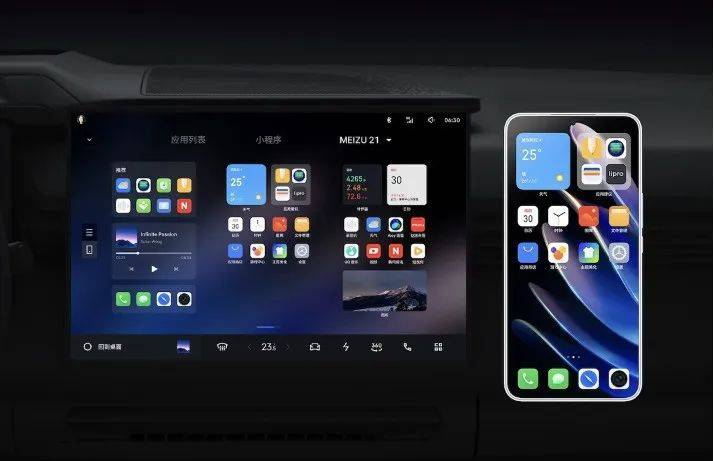
Last year, based on Flyme Auto, Star Era Meizu launched the "Boundaryless Smart Travel Open Platform" smart cockpit solution, offering automakers diverse cooperation modes, including a full-case mode that involves full participation from product design to research and development testing, an Inside mode, and a Link mode that creates a mobile phone domain.
In fact, behind every round of technological disruption and innovation lies an opportunity for overtaking on curves.
On the path to intelligent automotive terminals, Star Era Meizu, armed with Flyme AIOS, has seized the wave of AI technology and is navigating the curve to overtake. In its strategy to build a multi-terminal ecosystem, Star Era Meizu has always looked back from the market's phased endpoint, steadfastly advancing product and technological upgrades step by step to maintain product competitiveness.








